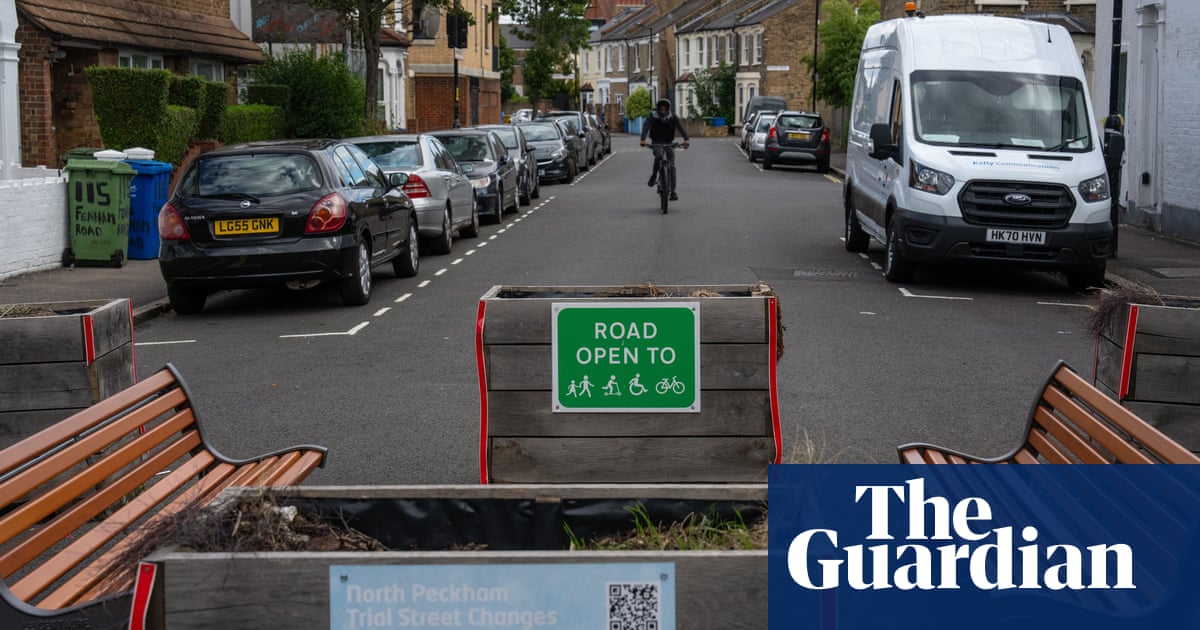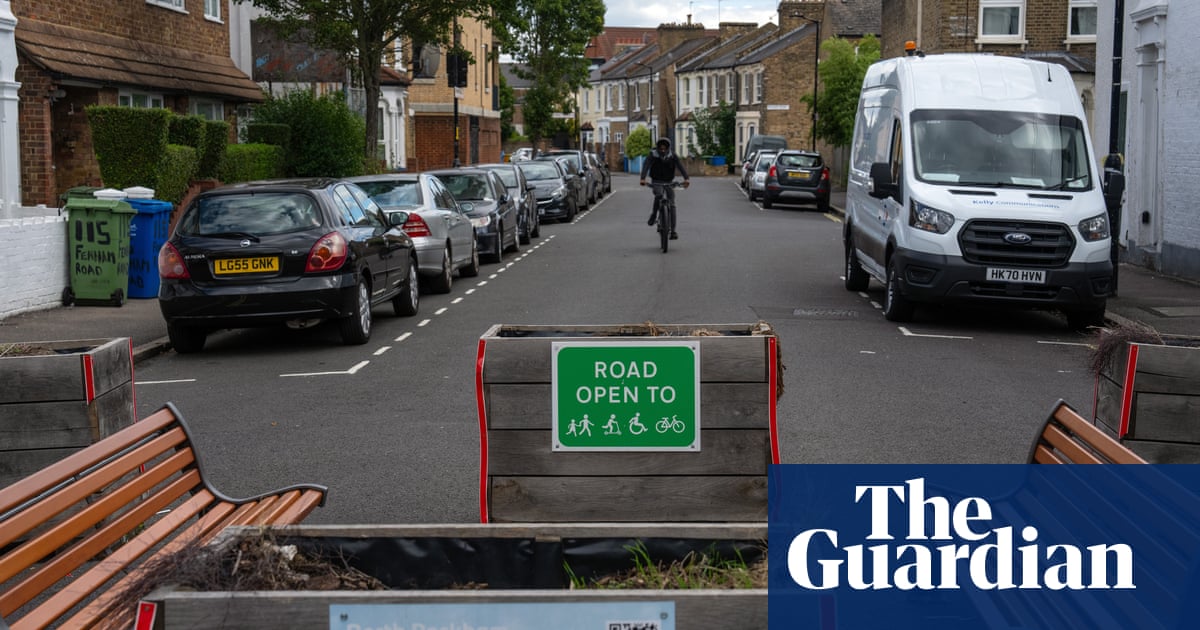
hey are not purely, or even mainly, about cycling, but the row about low-traffic neighbourhoods (LTNs), – where some residential streets are closed to through motor traffic – epitomises broader attitudes in the UK towards safer, more human-friendly streets.
And amid the daily froth of sometimes entirely false stories about LTNs closing roads, or slowing emergency service response times, one thing is often forgotten: these schemes tend to be very popular.
This is shown by new YouGov polling, commissioned by Greenpeace and shared with the Guardian, which found that where people had opinions on LTNs, positive views were more than three times more prevalent than negative ones.
The nationwide polling, carried out earlier this month, found 26% of people said they strongly supported LTNs, and 31% would “tend” to. In contrast, 8% strongly opposed them, and the same number tended to. That left more than a quarter of people who either didn’t know, or were neutral.
Arguably even more notable was another element of the poll, where people were given a list of seven possible changes to local transport, and asked to pick the two they found most important.
While the most popular choice was fewer potholes, picked as one of the options by 48% of people, 21% wanted more cycle routes, and 34% opted for reduced road traffic. Just 8% supported extra roads being built.
What does all this mean? It means – and I fully accept this is easy for me to say, never having stood for elected office in my life – that MPs and councillors who welcomed moves to boost walking and cycling amid the first peak of coronavirus should maybe see the angry cries of people who oppose LTNs in context.
The latest group to blink in the face of opposition led by vocal and often largely internet-based campaigns was Lewisham council in south-east London, which last week wound back several elements of a local LTN scheme.
More generally, it can feel a long way from the brief period when ministers were being lined up at No 10 press conferences to hail walking and cycling as the solutions to not just reduced public transport capacity, but more widely to help ameliorate the effects of future pandemics through better public health.
This rollback of ambition was emphasised on Monday, when the Daily Telegraph reported a letter from Grant Shapps, the transport secretary, to councils, reportedly warning them that too many cycle lanes were causing traffic buildup, adding: “No one should be in doubt about our support for motorists.”
In reality, as covered by the transport journalist Carlton Reid, the letter was more nuanced, saying ministers would still would be “speeding up the cycling revolution”. But, Shapps wrote, councils should “balance the needs of cyclists and pedestrians with the needs of other road users, including motorists and local businesses”.
That last phrase is particularly depressing. When done properly and over time, schemes to make walking and cycling more appealing should eat into the number of brief, one-person urban car trips, and help those who have no option but to drive. Similarly, the evidence tends to be that LTNs are good for business, not bad.
But the key message here is time. Not every LTN is designed perfectly at the start, and if done piecemeal, in isolation, they can cause spillover congestion on neighbouring residential roads. But this is an argument for more and better LTNs, not a return to how things were.
Because if one thing is clear, it’s that the status quo just won’t work. It’s an obvious point, but has to be said: gridlocked residential streets aren’t caused by a handful of cycle lanes, or social distancing-friendly expanded pavements, or a few streets filtered with bollards. They’re caused by too many cars, vans and trucks – and in the case of the cars, often carrying a single able-bodied adult a laughably short distance.
As Reid also reported, last month, as well as a 40% rise in the number of motor vehicles on UK roads over little more than a decade, in urban areas those vehicles are increasingly led by satnav apps down unsuitable sidestreets.
This was brought home to me a few days ago, when I used a Zipcar van to collect something bulky about five miles from where I live. It is connected by main roads, but I wasn’t totally sure of the way, so I used the Google Maps satnav on my phone.
By default, it directed me along a labyrinthine zigzag of residential roads, the sort of route that, until a few years ago, only taxi drivers or locals could have followed. Now there were hundreds of us squeezing along the narrow streets.
This new era of urban driving means changes to the road network need months to bed in. When the street I live on was closed to through motor traffic in one direction, the first week or so there were a near-constant mass of beeping, U-turning cars at the relevant junction. “This is madness!” the critics yelled. “End it now!”
It wasn’t ended. Satnav algorithms got updated, chaos subsided very quickly, rat-running traffic has largely evaporated, and now I’d wager many locals barely remember the old system.
In contrast, councillors in Lewisham panicked and changed course in a matter of weeks.
Again, to stress, I don’t underestimate how difficult it is for councillors to face abuse, hostility and even threats of violence after changing a long-assumed status quo. But for those who are wavering, I would urge them to bear two things in mind.
Firstly, if you eliminate an LTN, or another traffic-taming intervention, you’re not solving anything. But also, for all the noise from a minority, as the Greenpeace survey shows, they are a minority. These changes are popular.












